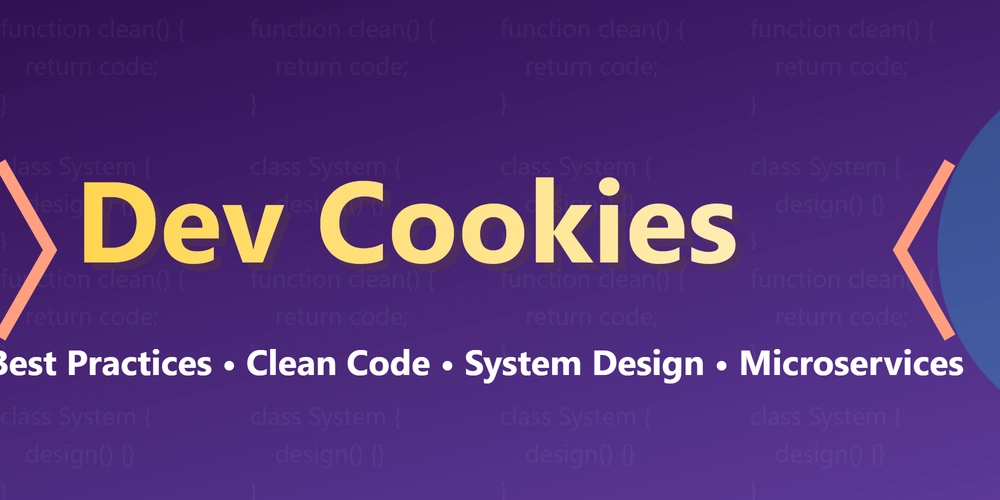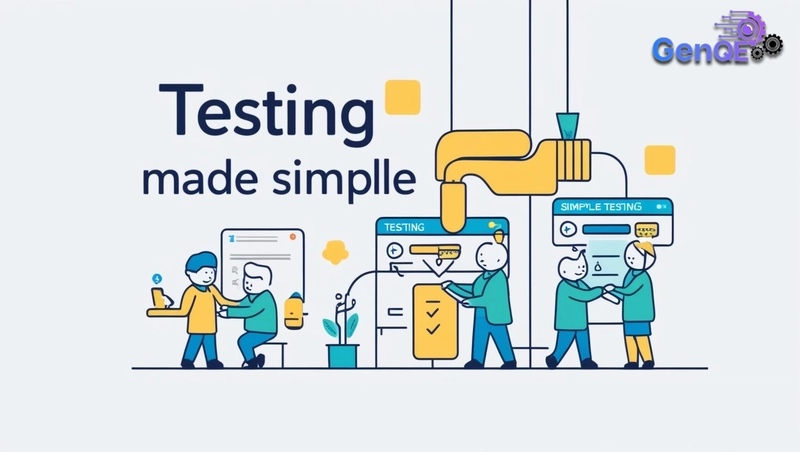Automation in AI Model Testing: Tools and Strategies
As artificial intelligence (AI) continues to revolutionize industries, the need for robust and efficient testing of AI models has become paramount. AI model testing ensures that these systems perform accurately, reliably, and ethically. However, manual testing of AI models is often time-consuming, error-prone, and impractical due to the complexity and scale of modern AI systems. This is where automation comes into play. In this article, we’ll explore the role of automation in AI model testing, discuss strategies for effective testing, and highlight how tools like Genqe.ai can streamline the process. Why Automate AI Model Testing? AI models are inherently complex, involving large datasets, intricate algorithms, and dynamic learning processes. Manual testing struggles to keep up with the scale and variability of these systems. Automation offers several advantages: Efficiency: Automating repetitive tasks saves time and resources. Accuracy: Reduces human errors and ensures consistent testing. Scalability: Handles large datasets and complex models with ease. Continuous Testing: **Enables real-time monitoring and validation of AI models. **Comprehensive Coverage: Tests a wide range of scenarios, including edge cases. Key Areas of AI Model Testing Automation can be applied to various aspects of AI model testing, including: 1.Data Validation Ensuring the quality and integrity of training and testing datasets is critical. Automated tools can: Detect missing, duplicate, or inconsistent data. Validate data distributions and ensure they align with real-world scenarios. Identify biases or anomalies in the dataset. 2.Model Performance Testing Evaluating the accuracy, precision, recall, and other performance metrics of AI models is essential. Automation can: Run large-scale tests to evaluate model performance across diverse datasets. Compare results against predefined benchmarks. Generate detailed performance reports. 3.Bias and Fairness Testing AI models must be tested for biases that could lead to unfair or discriminatory outcomes. Automated tools can: Analyze model predictions for disparities across different demographic groups. Identify potential sources of bias in training data. Provide recommendations for mitigating biases. 4.Robustness Testing AI models should perform reliably under various conditions, including noisy or adversarial inputs. Automation can: Simulate adversarial attacks to test model resilience. Evaluate performance under different environmental conditions. Identify vulnerabilities and suggest improvements. 5.Explainability Testing Ensuring that AI models provide transparent and interpretable results is crucial for trust and compliance. Automated tools can: Generate explanations for model predictions. Validate the consistency and accuracy of explanations. Ensure compliance with regulatory requirements. 6.Integration Testing AI models often interact with other systems, such as APIs, databases, or user interfaces. Automation can: Test the integration of AI models with backend systems. Verify data flow and communication between components. Identify and resolve integration issues. Strategies for Effective Automation in AI Model Testing To maximize the benefits of automation, follow these strategies: 1.Define Clear Objectives Establish clear goals and metrics for testing, such as accuracy, fairness, robustness, and explainability. This ensures that automated tests align with business and regulatory requirements. 2.Leverage Synthetic Data Use synthetic data to simulate rare or edge cases that may not be present in real-world datasets. This helps test the model’s performance under diverse conditions. 3.Implement Continuous Testing Integrate automated testing into the development pipeline to enable continuous validation of AI models. This ensures that issues are identified and resolved early in the process. 4.Monitor and Retrain Models AI models can degrade over time due to changes in data or environments. Use automated tools to monitor model performance and trigger retraining when necessary. 5.Collaborate Across Teams Involve data scientists, developers, and QA engineers in the testing process to ensure comprehensive coverage and alignment with business goals. The Role of Genqe.ai in AI Model Testing Genqe.ai is a powerful tool designed to streamline and enhance the automation of AI model testing. It offers a range of features that address the unique challenges of testing AI systems: 1.Comprehensive Data Validation Genqe.ai automates the process of validating training and testing datasets, ensuring data quality and integrity. It detects anomalies, biases, and inconsistencies, enabling you to build reliable AI models. 2.Performance Benchmarking The tool provides automated performance testing, allowing you to evaluate your model’s accuracy, precision, recall, and other metrics against predefined benchmarks. This ensures your model meets the required standards. 3.Bias and Fairness Analysis

As artificial intelligence (AI) continues to revolutionize industries, the need for robust and efficient testing of AI models has become paramount. AI model testing ensures that these systems perform accurately, reliably, and ethically. However, manual testing of AI models is often time-consuming, error-prone, and impractical due to the complexity and scale of modern AI systems. This is where automation comes into play. In this article, we’ll explore the role of automation in AI model testing, discuss strategies for effective testing, and highlight how tools like Genqe.ai can streamline the process.
Why Automate AI Model Testing?
AI models are inherently complex, involving large datasets, intricate algorithms, and dynamic learning processes. Manual testing struggles to keep up with the scale and variability of these systems. Automation offers several advantages:
Efficiency: Automating repetitive tasks saves time and resources.
Accuracy: Reduces human errors and ensures consistent testing.
Scalability: Handles large datasets and complex models with ease.
Continuous Testing: **Enables real-time monitoring and validation of AI models.
**Comprehensive Coverage: Tests a wide range of scenarios, including edge cases.
Key Areas of AI Model Testing
Automation can be applied to various aspects of AI model testing, including:
1.Data Validation
Ensuring the quality and integrity of training and testing datasets is critical. Automated tools can:
Detect missing, duplicate, or inconsistent data.
Validate data distributions and ensure they align with real-world scenarios.
Identify biases or anomalies in the dataset.
2.Model Performance Testing
Evaluating the accuracy, precision, recall, and other performance metrics of AI models is essential. Automation can:
Run large-scale tests to evaluate model performance across diverse datasets.
Compare results against predefined benchmarks.
Generate detailed performance reports.
3.Bias and Fairness Testing
AI models must be tested for biases that could lead to unfair or discriminatory outcomes. Automated tools can:
Analyze model predictions for disparities across different demographic groups.
Identify potential sources of bias in training data.
Provide recommendations for mitigating biases.
4.Robustness Testing
AI models should perform reliably under various conditions, including noisy or adversarial inputs. Automation can:
Simulate adversarial attacks to test model resilience.
Evaluate performance under different environmental conditions.
Identify vulnerabilities and suggest improvements.
5.Explainability Testing
Ensuring that AI models provide transparent and interpretable results is crucial for trust and compliance. Automated tools can:
Generate explanations for model predictions.
Validate the consistency and accuracy of explanations.
Ensure compliance with regulatory requirements.
6.Integration Testing
AI models often interact with other systems, such as APIs, databases, or user interfaces. Automation can:
Test the integration of AI models with backend systems.
Verify data flow and communication between components.
Identify and resolve integration issues.
Strategies for Effective Automation in AI Model Testing
To maximize the benefits of automation, follow these strategies:
1.Define Clear Objectives
Establish clear goals and metrics for testing, such as accuracy, fairness, robustness, and explainability. This ensures that automated tests align with business and regulatory requirements.
2.Leverage Synthetic Data
Use synthetic data to simulate rare or edge cases that may not be present in real-world datasets. This helps test the model’s performance under diverse conditions.
3.Implement Continuous Testing
Integrate automated testing into the development pipeline to enable continuous validation of AI models. This ensures that issues are identified and resolved early in the process.
4.Monitor and Retrain Models
AI models can degrade over time due to changes in data or environments. Use automated tools to monitor model performance and trigger retraining when necessary.
5.Collaborate Across Teams
Involve data scientists, developers, and QA engineers in the testing process to ensure comprehensive coverage and alignment with business goals.
The Role of Genqe.ai in AI Model Testing
Genqe.ai is a powerful tool designed to streamline and enhance the automation of AI model testing. It offers a range of features that address the unique challenges of testing AI systems:
1.Comprehensive Data Validation
Genqe.ai automates the process of validating training and testing datasets, ensuring data quality and integrity. It detects anomalies, biases, and inconsistencies, enabling you to build reliable AI models.
2.Performance Benchmarking
The tool provides automated performance testing, allowing you to evaluate your model’s accuracy, precision, recall, and other metrics against predefined benchmarks. This ensures your model meets the required standards.
3.Bias and Fairness Analysis
Genqe.ai includes advanced algorithms to detect and mitigate biases in AI models. It analyzes predictions across different demographic groups and provides actionable insights to ensure fairness.
4.Robustness Testing
With Genqe.ai, you can simulate adversarial attacks and evaluate your model’s resilience under various conditions. This helps identify vulnerabilities and improve model robustness.
5.Explainability and Compliance
The tool generates transparent explanations for model predictions and ensures compliance with regulatory requirements. This builds trust and ensures ethical AI practices.
6.Seamless Integration
Genqe.ai integrates seamlessly with your existing development pipeline, enabling continuous testing and monitoring of AI models. It supports collaboration across teams, ensuring comprehensive coverage and alignment with business goals.
Conclusion
Automation is transforming the way we test AI models, making the process more efficient, accurate, and scalable. By leveraging tools like Genqe.ai, businesses can ensure their AI systems are reliable, fair, and compliant with regulatory standards. Whether you’re validating data, testing performance, or ensuring explainability, automation provides the tools and strategies needed to build trustworthy AI models. As AI continues to evolve, embracing automation in testing will be key to staying ahead in the competitive landscape.













































































































































































![[The AI Show Episode 142]: ChatGPT’s New Image Generator, Studio Ghibli Craze and Backlash, Gemini 2.5, OpenAI Academy, 4o Updates, Vibe Marketing & xAI Acquires X](https://www.marketingaiinstitute.com/hubfs/ep%20142%20cover.png)



























































































































![[FREE EBOOKS] The Kubernetes Bible, The Ultimate Linux Shell Scripting Guide & Four More Best Selling Titles](https://www.javacodegeeks.com/wp-content/uploads/2012/12/jcg-logo.jpg)



![From drop-out to software architect with Jason Lengstorf [Podcast #167]](https://cdn.hashnode.com/res/hashnode/image/upload/v1743796461357/f3d19cd7-e6f5-4d7c-8bfc-eb974bc8da68.png?#)





































































































.png?#)





.jpg?#)
































_Christophe_Coat_Alamy.jpg?#)










































































































![Rapidus in Talks With Apple as It Accelerates Toward 2nm Chip Production [Report]](https://www.iclarified.com/images/news/96937/96937/96937-640.jpg)





































































































































